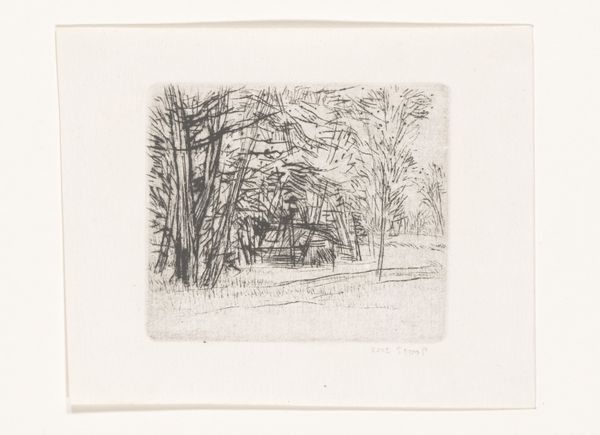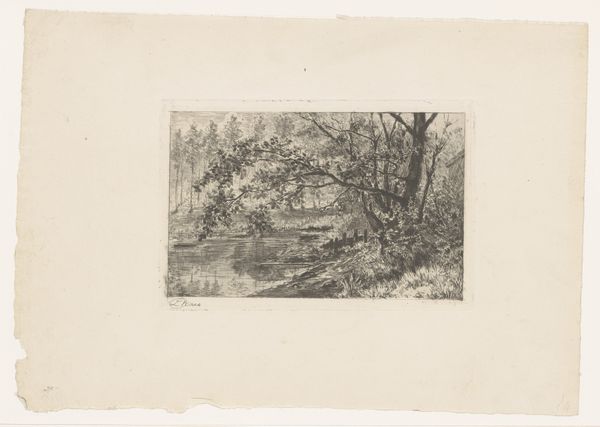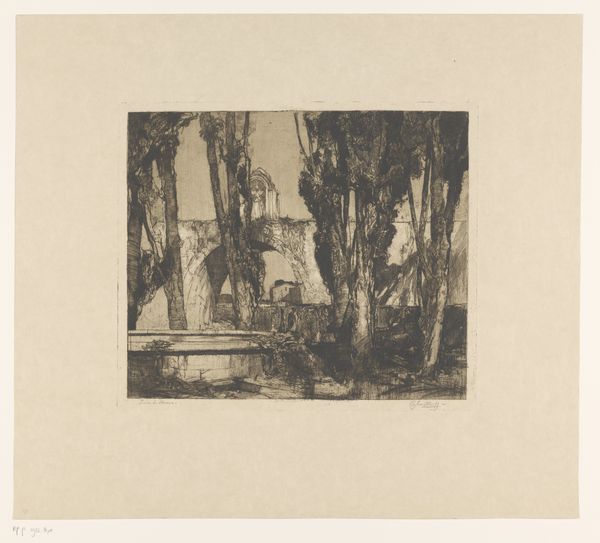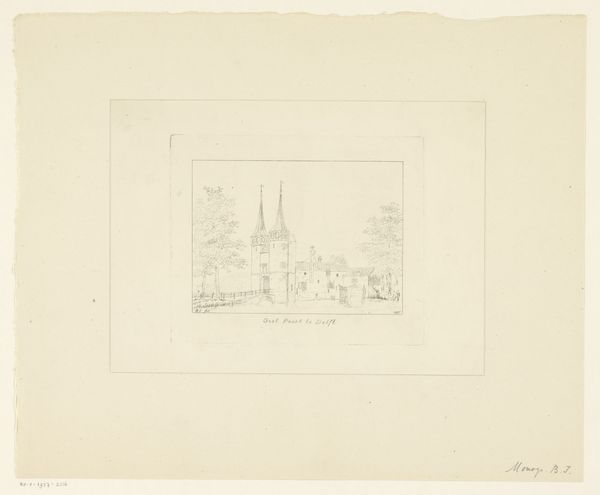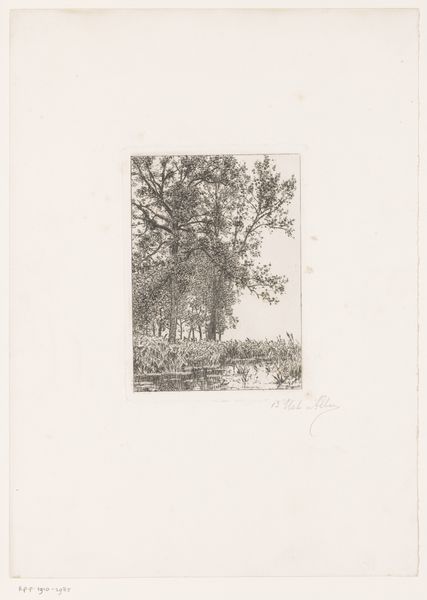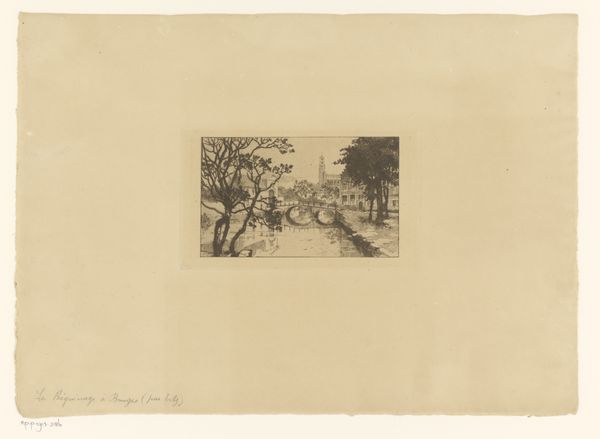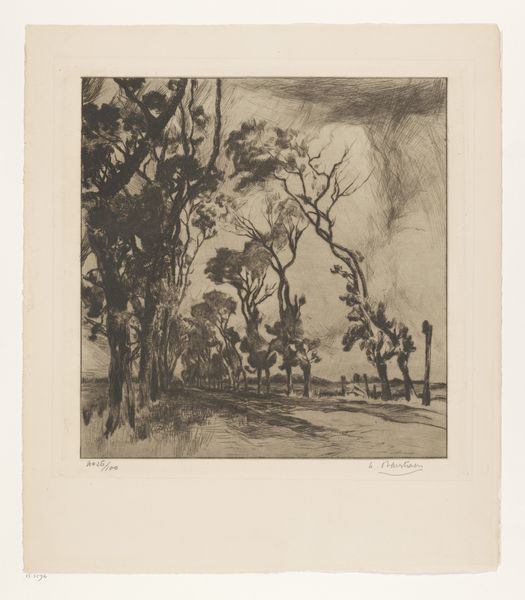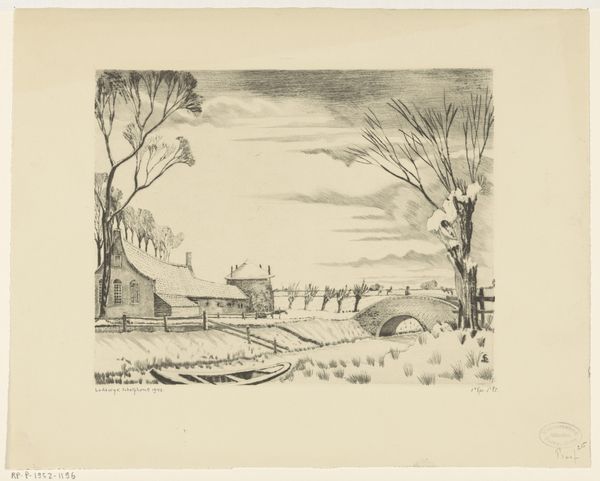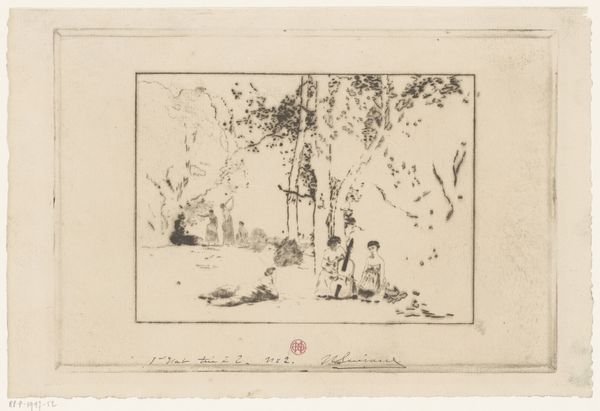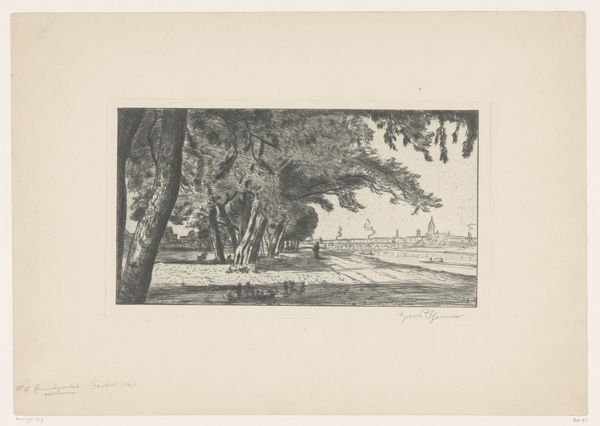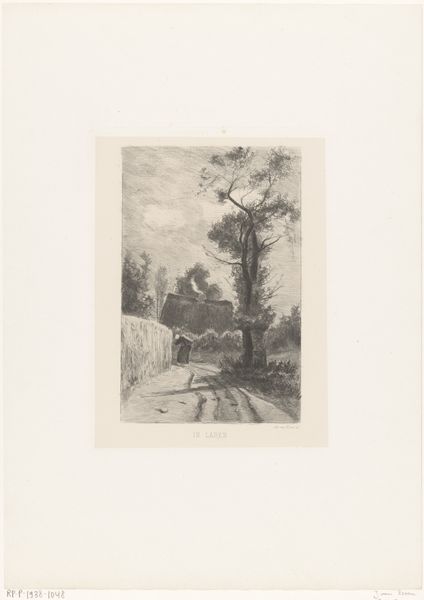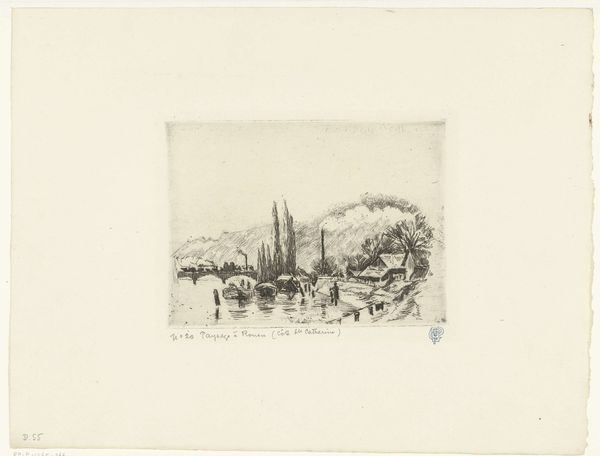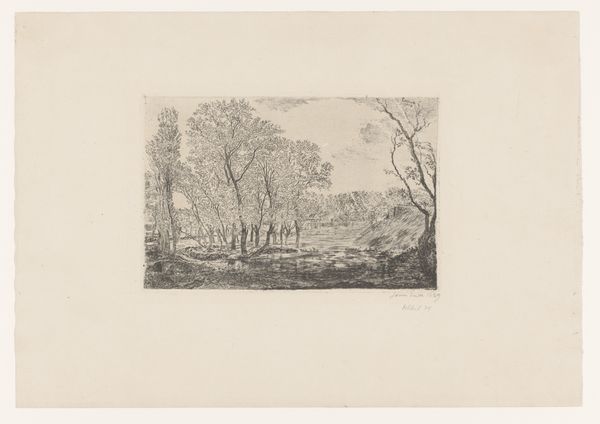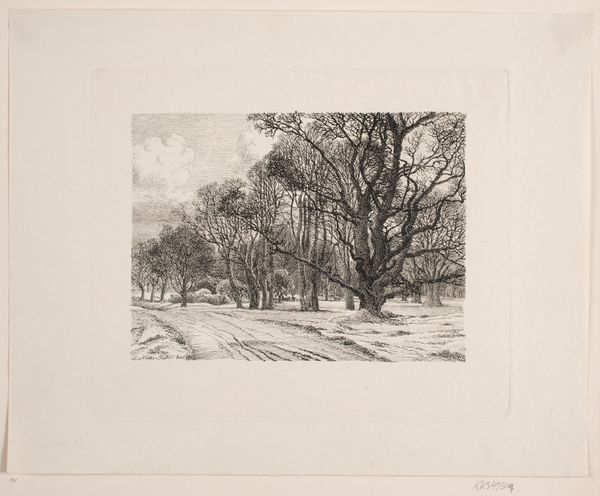
print, etching, paper
# print
#
etching
#
landscape
#
etching
#
paper
Dimensions: height 103 mm, width 135 mm
Copyright: Rijks Museum: Open Domain
Curator: Jean Emile Laboureur created this etching, titled "Landschap met paardenkar," or "Landscape with Horse Cart" in 1928. It's a quaint little scene. Editor: It’s incredibly delicate. The limited lines create such a sense of stillness. The whole process of etching – the labor of the hand – speaks to a slower, agrarian pace. Curator: Indeed, that deliberate slowness contrasts with the industrial advancements occurring rapidly during that era. Laboureur captures a timeless rural scene, one perhaps idealized amidst societal shifts. Consider also how prints democratized art ownership during that period, bringing landscapes like these into more homes. Editor: You're right, there’s a clear commentary through the choice of subject. Look closely and the etched lines are themselves uneven; there's a visible human touch. Was it typical for Laboureur to embrace visible marks of process? I mean the man would need skill with both technical knowledge and visual design! Curator: The humanistic quality in his work underscores Laboureur's place among artists engaging with printmaking’s accessibility for representing everyday life and, often, rural themes. I understand his social commentaries were well known? Editor: I think to the work involved and how it engages social structures gives another read altogether. To represent work like that means also acknowledging your role in replicating it. What kind of social meaning comes across? Curator: It allows viewers an accessible avenue for reflection and potentially to participate. And, in an era where societal mobility could often displace families from the land, prints of the pastoral were not merely artistic expressions, but nostalgic, sometimes poignant records. Editor: It really emphasizes how choices like process, subject matter, even the act of distribution, contribute layers of social discourse. To make things by hand and depict an ideal comes with it own message, too! Curator: I’ll agree, this etching functions as more than just a picturesque view; it represents socio-political undercurrents expressed through artistic choice and dissemination. Editor: Exactly, making it far richer to experience once you examine its means of production, distribution and the realities of its representation.
Comments
No comments
Be the first to comment and join the conversation on the ultimate creative platform.
